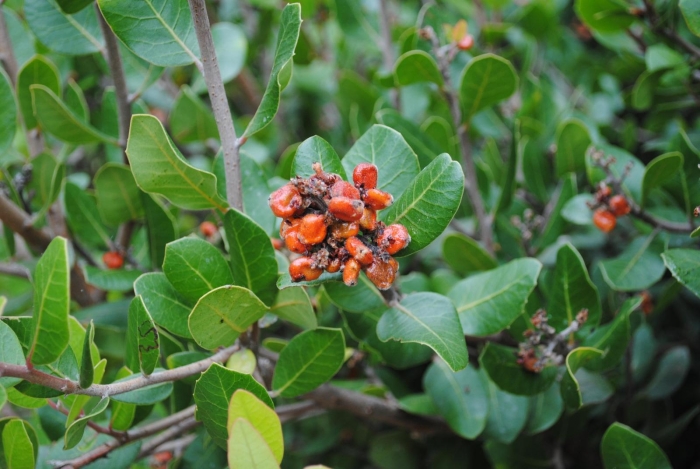Lemonade Sumac
(Rhus integrifolia)
Lemonade Sumac (Rhus integrifolia)
/
/

Oabjf34Q (talk)
CC BY-SA 3.0










































































Estimated Native Range
Summary
Lemonade Sumac is valued for its drought tolerance and wildlife support, offering nectar and fruit for birds and butterflies. It is often used in landscaping as a hedge, screen, or espalier. The plant is frost-sensitive, but damaged specimens typically recover by summer. It has a slow to moderate growth rate and is resistant to deer predation. Cultivation requires conditions that mimic its natural habitat, including well-drained soil and minimal summer watering. It thrives in full sun to part shade and prefers soils with medium drainage.CC BY-SA 4.0
Plant Description
- Plant Type: Shrubs
- Height: 6-10 feet
- Width: 5-15 feet
- Growth Rate: Moderate
- Flower Color: N/A
- Flowering Season: Spring
- Leaf Retention: Evergreen
Growth Requirements
- Sun: Full Sun, Part Shade
- Water: Low
- Drainage: Medium
Common Uses
Bee Garden, Bird Garden, Butterfly Garden, Deer Resistant, Drought Tolerant, Edible*Disclaimer: Easyscape's listed plant edibility is for informational use. Always verify the safety and proper identification of any plant before consumption., Erosion Control, Fire Resistant, Fragrant, Hedges, Hummingbird Garden, Low Maintenance, Rabbit Resistant, Salt Tolerant, Street Planting
Natural Habitat
Coastal sage scrub and chaparral regions of California and Baja California, Mexico
Other Names
Common Names: Lemonadeberry , Sourberry
Scientific Names: Rhus integrifolia , Styphonia serrata , Schmaltzia integrifolia , Styphonia integrifolia , Neostyphonia integrifolia , Rhus hindsiana , Rhus integrifolia var. serrata , Toxicodendron hindsianum , Toxicodendron integrifolium
GBIF Accepted Name: Rhus integrifolia (Nutt.) Benth. & Hook.fil. ex Brewer & S.Watson